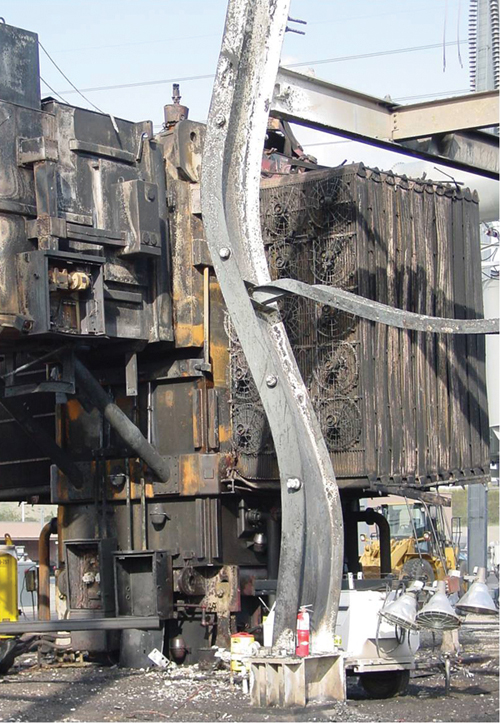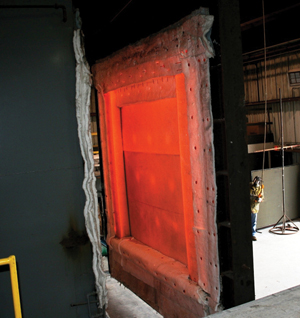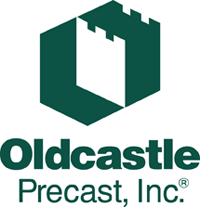Electrical Transformer Fire and Explosion Protection
![]() Continuing Education
Continuing Education
Use the following learning objectives to focus your study while reading this month’s Continuing Education article.
Learning Objectives - After reading this article, you will be able to:
- Assess why transformers fail and discuss causes and effects of transformer fires
- Describe the limits of Portland cement concrete and other materials in containing electrical transformer fires
- List key containment strategies for fire and explosion protection and identify the most effective fire containment solutions
- Describe how to retrofit electrical transformer yards with fire- and blast-resistant concrete walls to minimize potential damage and maximize safety
Electrical transmission and distribution (T&D) systems are at the heart of every developing economy. Demand for electricity rapidly increases as a nation or country becomes more developed and industrialized. Economies that are emerging or expanding such as China and India, as well as those in the Middle East and Latin America, are currently experiencing a period of rapid growth and expansion of their electrical T&D systems. According to Lloyd's of London the number of new, large transformers built around the world each year is less than 100.1 Manufacturers are weighed down by orders from these emerging economies, where new electrical grids are being built to cope with the demand for power. The lead time for new large transformers can be up to three years.
Aging U.S. Transformers
Growing concerns continue to surround the aging T&D systems in the United States. The electrical power system in the United States experienced its booming growth period beginning in the early to mid-twentieth century, reaching a peak in 1973-1974, when enough new transformers, capable of handling 185 GVA (giga volt amperes) of power, went into service. The large step-up and step-down substation transformers that were installed throughout the boom of the 1960s and 1970s are now over forty years old and are operating well past their service life expectancy. Add to this the continually increasing operating stress that results from load increases driven by system growth, and the potential risk of failure of these large transformers becomes unavoidable.
Why Transformers Fail
Transformer failures occur for a variety of reasons including insulation deterioration, lightning, line surges, overloading, material failure, and oil contamination to name a few. According to an insurance sponsored study titled "Analysis of Transformer Failures," completed by HSB Inspection & Insurance Co., the primary cause of failure was the deterioration of aging insulation which accounted for 25 percent of transformer failures included in the study.2 NEMA, the National Electrical Manufacturers Association has recognized that the principal underlying cause of transformer failures involves breakdown of the insulation.3
 |
Remnants of a large transformer fire Photo courtesy of Alonso Rodriguez |
When Transformers Fail
When a transformer does fail, the results are often catastrophic. If the failure was not caused by an existing fire, the potential for a new fire resulting from the failure is extremely high. A power substation by its nature contains all of the right ingredients to generate the perfect fire storm. A typical substation transformer bank is comprised of three or more transformer tanks, each containing up to 45,000 gallons of extremely flammable mineral oil. The ignition of the transformer oil can come from any number of sources including solid particles of insulation and conductor that are produced by incipient arcing fault, internal component failure, or short circuit electrical arcing inside the tank, any of which can generate resulting heat and pressure sufficient to cause the tank to rupture.
The Consequences of Fire
Once a rupture has occurred, air rushes into the tank and the oil explodes resulting in a blast of intense radiation scattering flaming oil, steel shrapnel, gaseous decomposition products, solid insulation, and molten conductor material onto the surrounding area. The effect of the explosion and radiation is instantaneous and has been documented to ignite neighboring transformers more than 60 feet from the initial fire. The temperature of an oil fire is in the range of 1760° F and 2190° F. The duration of a transformer oil fire can range from 4 to 28 hours, which in most cases is the time it takes the fire to burn itself out. As larger substations are often located in outlying areas, response times from the local fire department can be lengthy. In addition, fire trucks are rarely equipped to suppress these supersized oil fires.
Assets Worth Protecting
The cost to replace a large failed transformer can range from 2 to 4 million dollars, depending on transformer type. However, the higher cost by far is the replacement energy, which must be purchased from the spot market at premium prices. During peak hours, rates could spike up to $200,000 per hour.4 Uncontained fires caused by transformer failure can quickly result in the partial or total loss of the entire electrical substation. Specific transformer failures are difficult to anticipate and prevent, however, additional damage is preventable with the proper fire containment plan in place.
Fire Containment Planning
Often, the best defense is a good offense. Anticipating and planning for transformer failure is the first step to minimize damage to other nearby transformers, equipment, structures and property.
Key Containment Strategies
Transformer Firewall
A transformer firewall serves as a fire containment barrier between one oil-filled transformer and other neighboring transformers, building structures, and site equipment. Effective transformer firewalls must be made from materials that can withstand the intense heat and long duration of transformer oil fires. They must also be designed such that both thermal and mechanical requirements are met before, during, and after the fire.
 |
Installed modular refractory concrete firewall Photo courtesy of Oldcastle Precast Inc. |
Â
Projectile Blast Barrier
A projectile blast barrier having sufficient impact resistance to survive shrapnel impingement is also essential to protecting nearby assets. Fire caused by transformer failure may initiate an explosion, blasting projectiles such as steel fragments and porcelain up to 250 feet or more into the surrounding areas. Such projectiles have been found embedded into transformers, equipment and office walls in nearby buildings. As there are yet no standards for firewall impact loading, experts in the fields of ballistics and explosives have recommended applying UL Standard 752. This is equivalent to a firewall panel stopping a .44 magnum projectile with no through-penetration.
 |
Refractory concrete ballistics test Photo courtesy of Alonso Rodriguez |
ASTM E1529 vs. IBC
While the effects of large hydrocarbon pool fires on structural members have been determined through ASTM E1529-10 Standard Test Methods, the application requirements have yet to be reflected in building codes such as those set forth by International Building Code (IBC) or National Fire Protection Association (NFPA). The main deficiencies in the existing building and fire codes are the lack of distinction between the energy input rate, duration, and severity of solid fuel fires as compared to the hydrocarbon liquid fires tested for in ASTM E1529-10 and found in substation transformer fires. The result is a false belief that a firewall that meets NFPA 221-09, or 850 5.1.4.3, which specifies a 2-hour-rated firewall for temperatures up to 1200° F, is sufficient to withstand a hydrocarbon oil fire burning at temperatures as high as 2190° F for four hours. In real world conditions a hydrocarbon oil fire can last well over four hours before burning itself out. Any firewall not rated for a minimum four-hour high heat flux exposure at 2190° F would fail, some within the first five minutes of such exposure.
 |
Refractory concrete firewall test Photo courtesy of Alonso Rodriguez |
Material MattersÂ
Traditionally, firewalls are built from reinforced concrete and/or concrete blocks. When concrete made with common Portland cement (PCC) is exposed to temperatures above 1200° F, the cement becomes dehydrated and loses its structural integrity, retaining only about 35 percent of its room temperature strength.5 Firewalls made with traditional concrete materials and used in substation firewall applications have failed under the actual conditions of a transformer oil fire because these materials do not perform as needed under the extreme stesses commonly found in a hydrocarbon oil fire. For a transformer fire containment wall to be successful in real world conditions it must be made of a material that withstands the extreme heat flux and temperatures of an oil fire having a working temperature of between 1760° F and 2190° F for a minimum of four hours, followed immediately by a high-pressure water jet blast. One such material is refractory concrete.
Refractory Concrete
Refractory concrete refers to concrete made with refractory materials. Refractories are heat- resistant materials that have the ability to withstand sudden temperature changes, prolonged high temperatures as well as load and abrasive forces. High alumina cements and fireclay refractory materials such as crushed fire brick are commonly used as aggregate in refractory concretes. Refractory concrete is versatile in application and can either be cast in place or precast into relatively lightweight components to create a stable, high performance fire containment wall that retains considerable strength at temperatures up to 2372° F. Refractories emit no volatile organic compounds or hazardous material when exposed to prolonged high temperatures, and have been used for centuries to handle molten metal in foundries and smelters. Refractory concretes are designed to meet the thermal and mechanical requirements over the service life of an electrical substation.
Ideal Fire Protection
Factors to be taken into account when considering transformer fire containment include the rapid, prolonged and extreme temperature phase transformations, the age of the T&D system, the sensitivity of the surrounding environment, and the explosive projectile blast potentials. Given these factors, the ideal transformer fire containment solution is a firewall and blast barrier that is manufactured using refractory concrete and will not only perform at the prolonged high temperatures typically found in an oil fire, but will simultaneously perform as a projectile blast barrier. While refractory concrete firewalls can be poured or cast in place, precast refractory concrete offers several advantages and benefits over cast in place concrete. Cast in place concrete firewalls involve extended cure times, labor intensive forming, and unreliable weather conditions that affect concrete mix quality. Precast refractory concrete firewalls are pre-manufactured in a controlled environment resulting in consistent mix quality, can be delivered and installed often in one day, and are "in service" within hours.
 |
Initial transformer fire ignites neighboring transformer Photo courtesy of Alonso Rodriguez |
Â
Understanding the potential for failure as well as the dangers and conditions present in an electrical transformer fire will provide the tools for identifying the most effective fire containment solutions available to keep transformer fires in their place.
| ENDNOTES | |
| 1 | Lloyd's of London 08-24-2010 Transformers-A Risk to Keeping the Power On |
| 2 | William H. Bartley, Analysis of Transformer Failures, Presented at Stockholm, 2003 |
| 3 | Edward N. Ziegler, Encyclopedia Of Environmental Science And Engineering, Volume 1 |
| 4 | ThermaLimits Substation Fire Hazard Conditions and Potential Consequences |
| 5 | United States Patent 3,798,043 Wallouch High Strength Refractory Concrete |
Â
|

